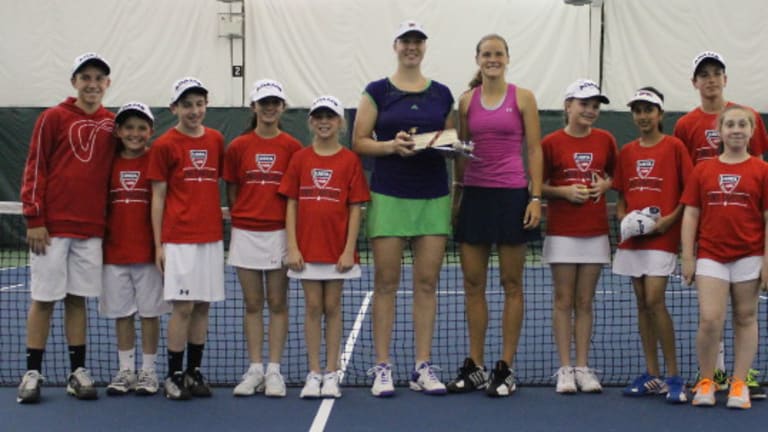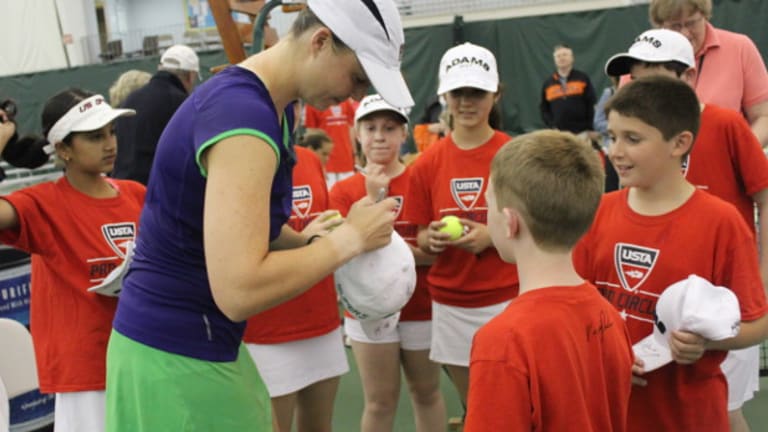In her career, she had beaten former world No. 1s such as Venus Williams, Kim Clijsters, Ana Ivanovic and Jelena Jankovic. But after conquering a much tougher opponent, Alisa Kleybanova was working on her next task: Battling a player ranked 1,149th.
It was May 2013, and Kleybanova, a 24-year-old from Moscow and former world No. 20, had entered a $10,000 ITF tournament in the small town of Landisville, PA. It was a world away from Rome, where the top players were competing that week. Rome also happened to be the last tournament in which Kleybanova had played, back in May 2011, before she received a devastating diagnosis of Hodgkin’s lymphoma. The shocking news forced her off the tour just months after she reached a career-high ranking.
Kleybanova is a dogged brawler who throws her entire body into whipping shots from behind the baseline, zooming across the net at impossibly sharp angles, forcing her opponents to work just as hard as she does or quickly be beaten. She threw that same intensity into her battle with cancer, and she proudly posted on her website: “Alisa Kleybanova def. Hodgkin’s lymphoma 6-0, 6-0.”
“I just was ready to go through anything,” Kleybanova said at last year’s US Open. “I wanted to be back healthy and play again. So I think that gave me a lot of confidence. I just took it like when you do very tough training. You have to go through this because [afterward] you’ll get better and things will get better.
“Because I had that goal, I just was very focused on doing the right things, and it helped me to go through everything without giving up.”
Kleybanova made her diagnosis public in July 2011 and underwent treatment in Italy. She returned to the tour only eight months later in Miami, winning her first match before losing the second in two close sets. “It’s just really good to see her,” Maria Sharapova said during the tournament. “When you see someone that’s gone through so much and come back to play the game of tennis, you just have so much respect for the person.”
But it was the last most would see of Kleybanova for the rest of that year, as the effort left her exhausted for months. She trained with mixed results, reluctant to try another comeback that might discourage her if she didn’t play up to her expectations. Fifteen months later, Kleybanova needed to play a tournament to keep herself eligible for a protected ranking. So she went to Landisville, putting her on the lowest possible level of sanctioned professional tennis. Kleybanova had not played in such a low-level tournament since she was 14. There were none of the amenities she had become accustomed to—no chair umpire, no line judges—but Kleybanova had little trouble moving on, winning her opening match 6-1, 6-1 against starstruck Australian Brooke Rischbieth.
“I’m not expecting unbelievable tennis from myself at the moment,” she said after that win. “For me the most important thing is that I’m able to stay there for the whole match, finish it up. And, of course, I’m happy to win it.”

